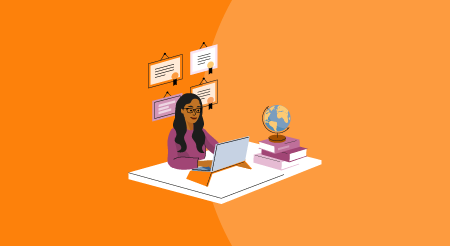Standardized curricula and traditional teaching methods often don’t take into account the individual needs of students in learning institutions or employees in training programs. As a result, many students become disengaged and unmotivated, leading to poor academic or training performance.
But what if there was a way to personalize learning so you could make sure your students or employees are learning in the way that suits them best? By using data-driven insights to track student or employee progress and identify areas of need, personalized learning programs can ensure that every student receives the individualized attention they need to succeed.
Whether you are a company looking to create a custom learning program for your employees, or a student hoping to make the most of your education, these three tips will help you achieve success.
What is personalized learning?
Organizations and students alike are beginning to embrace personalized learning. But what exactly is personalized learning? Personalized learning is an educational approach that allows students to progress at their own pace and choose the learning experiences that work best for them.
While personalized learning programs can take many different forms, they all share a common goal—to provide each learner with an individualized education that meets their unique needs and to allow workers to focus on the specific skills they need in order to advance within the company. This gives them more opportunity for professional growth and development. These programs show promising results, with students making more progress and demonstrating greater engagement than traditional education models.
3 personalized learning program tips for companies and students
1. Allow for learner input and customization
Building a personalized learning program can be daunting. It’s important to remember that every learner is different, and therefore, each will have different needs. The best way to cater to these needs is to allow for learner input and customization.
Personalized learning examples:
Get to know your learners. What are their goals? What motivates them? What learning style do they prefer? By getting to know your learners, you’ll be better equipped to create a personalized learning program that meets their needs.
Once you know your learners, it’s essential to allow their input. What do they want to learn? What topics are they interested in? What format do they prefer? Allowing your learners to have a say in the learning process will help ensure that they’re engaged and motivated.
2. Use technology to personalize the learning experience
Companies and students can use technology to personalize the learning experience according to their specific needs and goals. Personalized learning programs offer a tailored approach that can include one-on-one instruction, technology-assisted learning, and/or flexible pacing.
When it comes to learning, one size does not fit all. Every learner has different needs, interests, and abilities. Personalized learning is an approach that takes these individual differences into account. Teachers can use technology to support personalized learning, from providing real-time feedback on progress to tailoring content to meet each learner’s needs.
Personalized learning examples:
Teachers can use technology to personalize learning by providing students with flexible pacing. Some students may need more time to master a concept, while others may be able to move on more quickly. Technology can provide students with individualized timelines and allow them to move through content at their own pace.
3. Incorporate social learning into the program
Social learning is a process where people learn from observing others, either in person or online. It’s an effective way to personalize learning programs and make them more relevant to the learner.
Personalized learning examples:
If a company wants to create a personalized learning program for its employees, it could use social learning to develop relevant and targeted content. The company could start by surveying its employees to find out what topics they’re interested in, and then use that information to create custom content that employees can access on their own time.
The relevance and effectiveness of personalized learning
There are many benefits of personalized learning (both for learners and companies), the most obvious being that it helps people learn more effectively. When learners have a say in what they’re learning and can tailor their education to their own needs and interests, they’re more likely to be engaged and motivated. This can lead to better outcomes, including improved grades and job performance.
Personalized learning also saves companies time and money. Companies can minimize training time and expenses by allowing employees to learn at their own speed and focus on job-specific issues. Personalized learning can also help firms improve their bottom line by improving job performance.
Finally, personalized learning can benefit society. People who can learn in their own way are more likely to obtain and keep jobs they enjoy. The result is a more productive workforce.
How Software Advice can help
So what does this mean for you? No matter where you are in your educational journey, Software Advice can help you find the perfect software to support personalized learning. We know it can be overwhelming to try and determine which product is best for your needs, but our team of experts is here to help. Plus, we have tons of resources like this blog post and our buyers guide to help you get started. Check out the following resources to learn more:
[adsanity_group align=’alignnone’ num_ads=1 num_columns=1 group_ids=’15192′]
Need Any Technology Assistance? Call Pursho @ 0731-6725516




